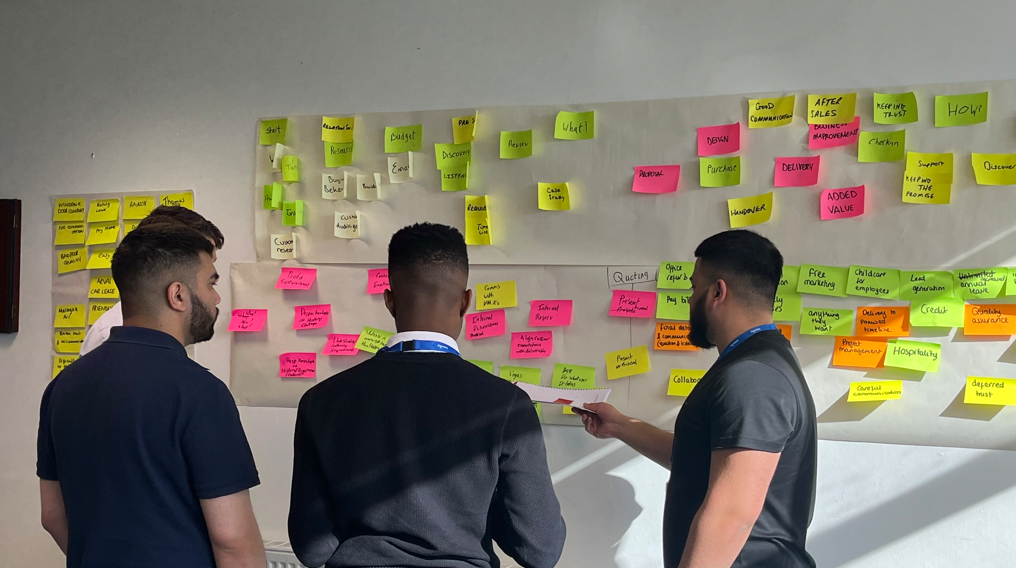Consumer behaviour is important and here’s a short story about why.
A long weekend in the magnificent village of London – what could be nicer?
Nevil was already there, having been visiting clients the day before, so I decided to take the early train so we could fill our day. All started well: a sunny day and an excellent breakfast served up by the friendly team on the Virgin East Coast.
As is the Tynemouth tradition, a trip to London requires visits to museums and other assorted places of interest. I won’t bore you with the details of how we ended up in the Science Museum, other than to say it was via a very long walk following a very short trip to the V&A Museum.
We were excited about visiting the Science Museum for the first time, having heard good stuff. Through the main doors, the obligatory bag search and then into the vast entrance to the museum. It’s an assault on the senses: the noise of people milling around mixed with kids’ laughter; the wonderful displays and general “shininess” of the museum. It’s fantastic and we’re not even in the museum proper. And then we’re greeted by what can only be described as a bank of tills, imagine Marks and Spencer. Stationed at each “till” is member of staff waiting keenly to assist you.
Hang on, these aren’t really tills; entry to the museum is free. No, these are, in my opinion, a very clever way of creating a sense of discomfort. Here’s why: the set-up plays on our auto-response to being met by a person at a till. Visitors are steered to a “greeter”, welcoming you to the museum with a cheery, “Hello, would you like to make a donation?”
Moments earlier I had been in a positive mood, looking forward to exploring the museum, but now…well now, this one simple step, this bank of tills and this request have me feeling a little deflated; I feel uncomfortable at being put on the spot. I did politely respond to the lady, explaining that I would make a donation on the way out once I had enjoyed the experience. As I said to my greeter, “I don’t know how good it is yet, so need to see the exhibits before I decide how much to donate”.
Introducing the Green Line
I’m now no longer in a positive mood. I say to Nevil, “Wow, they couldn’t have knocked me any further off the Green Line if they tried.” What? We talk about the green line a lot here at NRT. It represents the positive emotional state that customers need to be in before they buy. Why? Because when people are in a positive emotional state they are more likely to buy. In fact, they’ll buy more as they feel more adventurous. And after they have bought, rather than feel any sense of buyer’s remorse, they’ll feel euphoric, courtesy of a small release of dopamine.
This diagram above shows what we mean: the red line is a negative emotional state; blue is neutral, and the green line is a positive emotional state. The aim is to ensure that a customer is on the green line before they start to “sell”, represented by the vertical line.
We mooch about the museum, looking at the displays . I particularly loved the huge materials piece of work. Still, I can’t shake off the deflated feeling brought on by the entrance experience. Having looked at the exhibitions, we decide not to visit the coffee shop for a cuppa (influenced by my negative feeling), and leave without making a donation. Why? Because the start of my customer journey was poor and the museum didn’t do enough to recover.
A subsequent search on the usual review sites shows I’m not the only one to be affected in like this. It seems strange to ask for a donation before the experience when access to the experience is free. The museum may well have established that by causing visitors to pass through their system they get more donations. I can’t help believing that they are missing the opportunity to put their customers on the green line from the very outset, which will boost cross-sales, up-sales and create advocates.
The biggest irony of all is that the museum is practically on the District Line…the green line!










